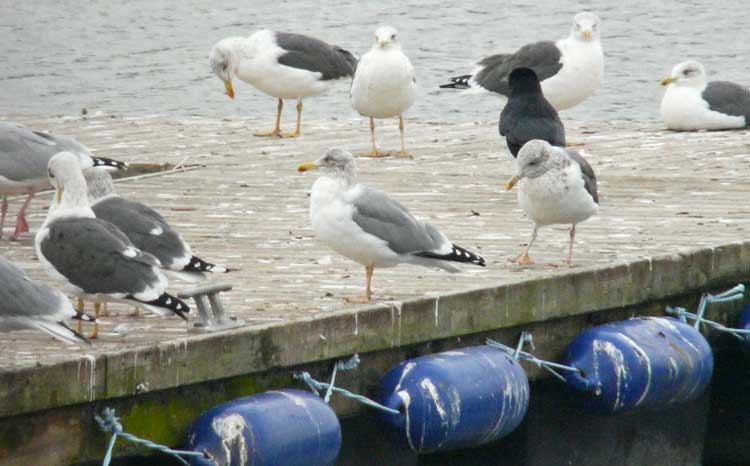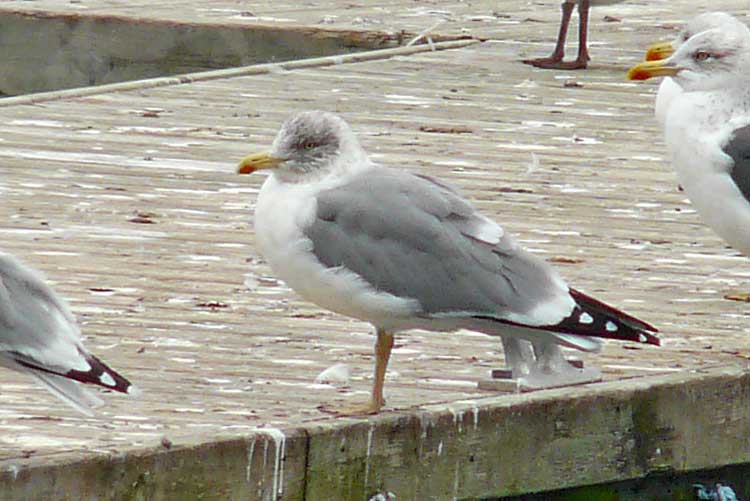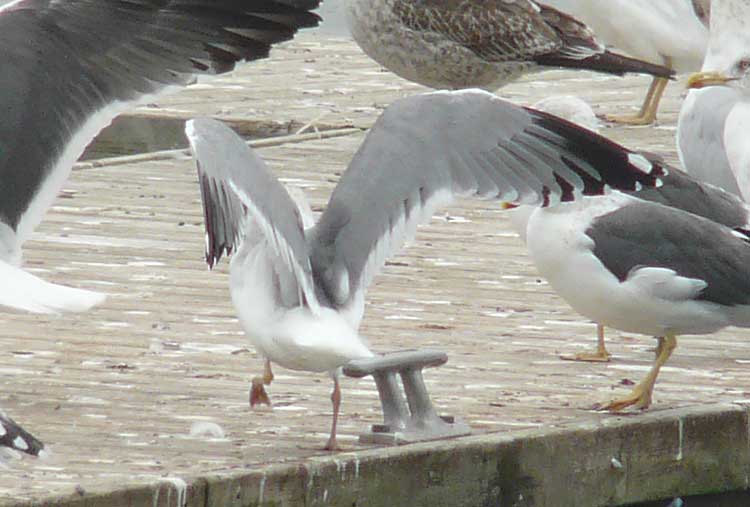Probable hybrid gull with yellow legs and strong head-streakingNovember 1st 2010, Dosthill Lake, Warks |

Note squat appearance and relatively short legs.

Mantle relatively dark grey. Head streaking extensive and blackish-grey (not brown). However, breast 'clean' and unstreaked. Iris pale with limited yellow component. Legs dull yellow.

Single mirror (on p10). Black on p10 to p5 but no black on p4. Shape and extent of black on p5, p6 and p7 probably too restricted for atlantis.
The gull in the images above, which has yellow legs and a black band on p5, was photographed at Dosthill Lake, Warwickshire, on November 1st 2010. The intense blackish-grey head streaking initially raises thoughts of Atlantic Gull Larus (michahellis) atlantis. Note also that streaking is confined to the head, with no streaking on the lower neck or breast, and that there is just a single mirror, on p10. However, other aspects of the primary pattern do not accord with atlantis i.e. the black on p5, p6 and p7 is too restricted while most atlantis show a small black mark on p4, lacking in the above gull. On a classic atlantis, the head-streaking is even more intense than on this bird, creating almost a full 'hood'.
Equally, it seems unlikely that a true Mediterranean michahellis could show such intense and blackish head streaking in combination with a rather rounded head-shape, unexceptional bill size, and short legs. So, is this another yellow-legged gull attributable to a hybrid origin? I discussed it with Peter Adriaens, Philippe Dubois, Martin Garner, Richard Millington and Dick Newell, all of whom provided valuable comments. Peter was able to cite a hybrid gull with a comparable head-pattern and his references are instructive:
'A
hybrid is a possibility. YLG x LBBG pairs are still regular in the Low Countries
(more regular than pure YLG pairs!), and their offspring breed successfully
every year (usually paired with either LBBG or HG). We see a few of those
outside of the breeding period (many have been colour-ringed now) and they
usually show very little head streaking. However, birds interbreeding with
Herring Gull may show strong streaking; see e.g. bird J in photos 45-46 on
http://www.surfbirds.com/ID%20Articles/adriaensgulls31203.html,
which quite resembles the Dosthill Lake bird in head pattern.
At Zeebrugge (the main gull colony in Belgium, containing about 4,000 pairs)
last spring, 10 adult hybrid gulls were present, at least 3 of which raised
young. Also present were one pure pair of YLG, one YLG x HG pair, and one YLG x
hybrid pair. None of them bred successfully.'
© A. R. Dean
|
|
|
|
Home |
Mediterranean
| Laughing |
Franklin's |
Little |
Sabine's |
Bonaparte's |
Black-headed |
Ring-billed | Common |
Lesser Black-backed | |